Creating a nonprofit website has never been easier, thanks to the power and versatility of WordPress. As an outstanding content management system for organizations of all sizes, WordPress offers affordability, customizable designs, and access to countless plugins that can skyrocket the online presence of your charity website.
With the Open Data Project research revealing that 60% of nonprofits worldwide use WordPress as their website’s content management system, it’s clear that this powerful platform is the go-to choice for nonprofit organizations looking to create an impressive and effective online presence.
Read on as we unravel the step-by-step process of setting up a captivating and user-friendly non profit website with WordPress that will engage visitors, drive donations, and help you make a difference in your community.
Why Use WordPress To Create A Nonprofit Website?
Creating a nonprofit website with WordPress is an affordable and user-friendly option that offers customizable designs, access to plugins and themes, and the ability to manage content easily.
Affordability And Ease Of Use
One of the primary reasons to choose WordPress for building a non profit website is its affordability and ease of use. WordPress is known for its user-friendly interface, making it easy for anyone, even with minimal technical skills, to create and maintain a website.
WordPress offers a free content management system (CMS), which means that you can create and manage your website without any additional software expenses.
Additionally, WordPress is known for its user-friendly interface, making it an ideal choice even for those with little to no web development experience. The platform provides an intuitive dashboard that allows users to easily update content, add images or videos, and manage navigation menus with just a few clicks.
This means less time spent struggling with technical aspects and more time dedicated to spreading awareness about your cause and attracting supporters.
Customizable Design And Functionality
One of the major advantages of using WordPress for your non profit website is its customizable design. Beyond aesthetics, WordPress also provides access to plugins – powerful tools that enhance the functionality of your site without any coding knowledge required.
For example, SEO plugins can help improve search engine rankings so more potential donors discover your cause; donation plugins streamline the process for accepting donations through popular payment gateways; volunteer management systems allow easy coordination among staff members or volunteers on upcoming events or projects.
Access To Plugins And Themes
One of the key advantages of using WordPress for your non profit website is the access to a vast array of plugins and themes specifically designed to cater to the unique needs of nonprofits.
With thousands of themes available, finding one that aligns with your organization’s branding and goals becomes a seamless process.
SEO and marketing potential
With a variety of SEO tools and plugins like Yoast SEO, WordPress makes it easy to optimize your nonprofit website for search engines and increase its online visibility.
Step-by-Step Guide To Building A Nonprofit Website With WordPress
To build a nonprofit website with WordPress, start by creating an account and choosing a domain name and hosting provider, then install WordPress and select a theme that suits your organization’s mission.
Next, add essential plugins for donations and volunteer management systems while creating engaging content to tell your nonprofit’s story.
Create An Account
Creating an account allows you to unlock all of WordPress’s features and functionality, empowering you to easily collect donations, share your nonprofit’s story, and engage with supporters through your website.
Self-hosted WordPress vs. WordPress.com
- Self-hosted WordPress (“WordPress.org“)
Self-hosted WordPress offers greater control and flexibility but requires purchasing web hosting and managing updates. It is best suited for organizations that need customization.
WordPress.com provides a more streamlined setup and maintenance process but offers limited customization options. It is ideal for nonprofits just starting out or testing the platform.
Setting up self-hosted WordPress
Download WordPress from wordpress.org and follow the instructions. Install themes, plugins, and custom code as needed. Update themes, plugins, and WordPress software regularly.
Setting up WordPress.com
Choose a free or paid plan depending on your needs. Benefit from automatic updates and security features. Access WordPress.com support and documentation for assistance.
Transitioning from WordPress.com to self-hosted WordPress
Choose a theme available on both platforms. Use WordPress.com‘s export function and the WordPress Importer plugin to transfer content. Transfer email subscribers using the Jetpack plugin. Purchase a “Site Redirect” service for search engines and site visitors to locate your new site.
Process of creating WordPress website on WordPress.com
To begin creating your non profit website, visit wordpress.com and click on the “Get Started” button to initiate the account creation process.
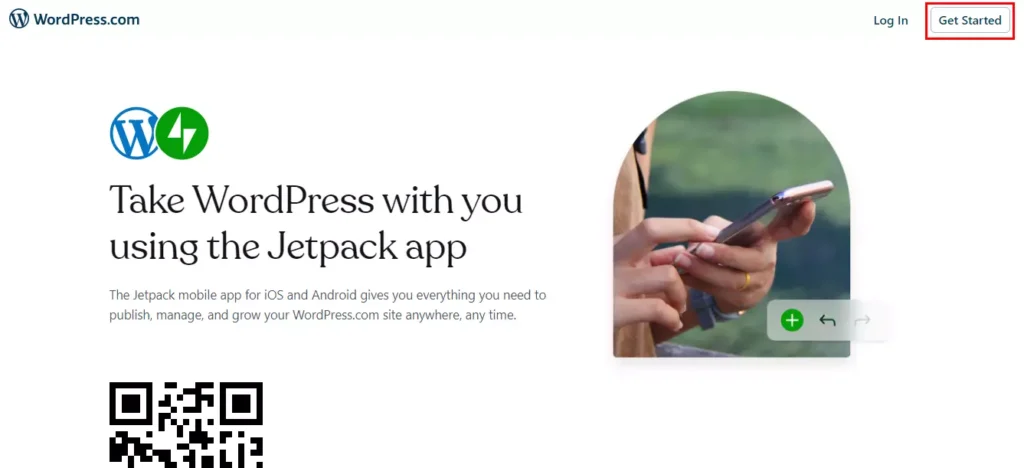
Fill in your details
Provide the necessary information, including your email address, desired password, and a unique username that represents your nonprofit organization. Make sure the username is easy to remember and relevant to your nonprofit’s mission or name.
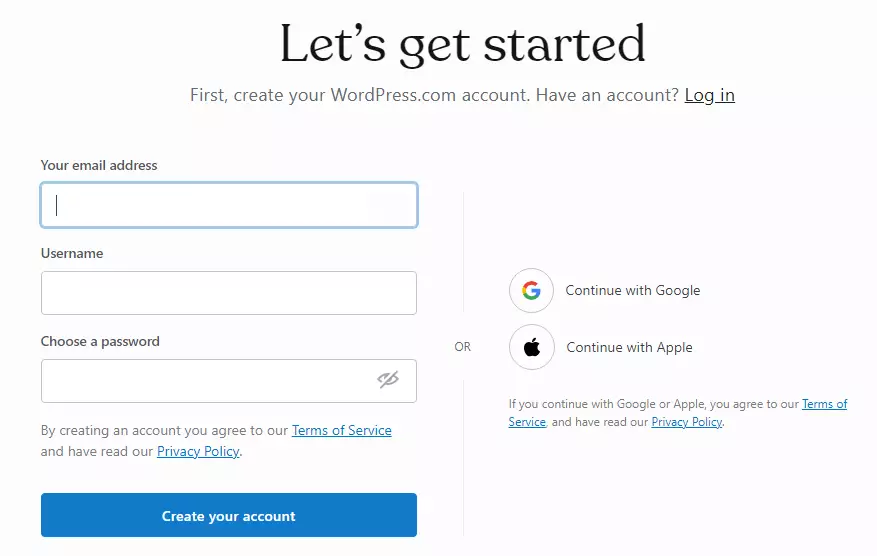
Confirm your email address
After entering your details, WordPress will send a confirmation email to the provided address. Open the email and click the confirmation link to verify your account and complete the registration process.
Access the WordPress dashboard
Once your account is confirmed, you’ll gain access to the WordPress dashboard. From here, you can customize your site’s theme, create and manage pages and posts, and install plugins to enhance your website’s functionality.
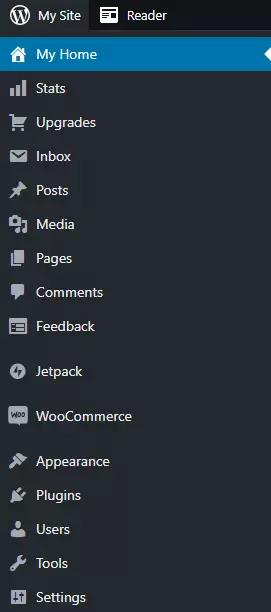
Choosing A Domain Name And Hosting Provider
In the process to create a nonprofit website with WordPress, choosing the right domain name and a reliable hosting provider plays a vital role.
What is a domain?
A domain serves as a guide for internet users, directing them to your website. Nonprofits frequently use the .org Top Level Domain (TLD), but alternatives like .com or the exclusive .ngo TLD for nonprofits are also available.
Typically, .com or .org domains cost between $10 to $20 annually. However, prices may be higher for shorter or sought-after domain names. The .ngo domains are generally more expensive, starting at around $50 per year.
What is web hosting?
A web hosting service provides the server containing the files and databases that constitute your website, including WordPress files, images, and your site’s content.
For hosting, you’ll want to choose a reliable provider like Host Duplex that offers fast loading times and excellent uptime rates. Other popular options for nonprofits include Bluehost, DreamHost, and SiteGround– all of which offer managed WordPress hosting plans specifically designed for WordPress and nonprofit websites.

A Hosting plan varies greatly based on the type and quality of service offered. Shared hosting can range from $4 to $15 monthly, while specialized WordPress-optimized hosting may cost between $7 and $25 or more per month.
Installing WordPress
Follow these steps to complete the installation process:
- Download WordPress – Download the latest WordPress version files from the official source.

- Upload files – Upload the WordPress files to your web host using one of two methods:
a) Unzip the WordPress package on your computer and upload the files to your web host using an FTP program.
b) Upload the zipped file to your web host using a provided File Manager utility, then unzip it on your server. - Create your database and database user – Create a MySQL database and a MySQL user with a username and password, granting permissions for that database. Your web host likely provides a MySQL database wizard to assist you with this step.
- Fill in the details – Navigate to your domain (e.g., example.org) to begin the WordPress installation process. Enter the database information from the previous step. Complete the setup by selecting your site’s language, name, tagline, first user, and search engine indexing preferences.
Selecting And Customizing A WordPress Theme
Selecting the right WordPress theme for your non profit website is crucial in creating a visually appealing and engaging website. The good news is that there are numerous free and premium themes available that cater to different kinds of nonprofits.
Once you select a suitable theme for the website platform of your nonprofit organization, customize it to align with your branding guidelines by adding colors, logos, or images that reflect your mission.
You can also unlock unlimited customization options by using premium themes or coding your own unique customizations. Remember to optimize your website’s navigation menu as well as add relevant content and internal titles assigned tags on the pages created based on keywords relevant to both search engine optimization (SEO) efforts and the needs of the target audience.
Consider the following factors to assess the theme’s quality and suitability for your nonprofit website:
- Release date and last update, to ensure the theme is current and well-maintained
- Explicit labeling as “accessible” for careful coding
- Support for the WordPress block editor (Block Styles or Gutenberg support)
- Availability of technical support from the theme author
- Documentation for the theme, to assist with its use
- Popularity, high ratings, and a significant number of downloads/purchases
- A refund policy, if the theme is a paid option
Adding Essential Nonprofit Plugins
Once you have your WordPress site up and running with an attractive theme, it’s time to enhance its functionality with plugins. These are essential for adding powerful features to your site, making it more user-friendly and efficient.
Plugins can help you achieve various goals, such as:
- Adding widgets for social media icons, contact information, and images
- Backing up your website
- Integrating Google Analytics or other third-party services
- Managing events and calendars
- Creating forms (e.g., “Contact Us,” volunteer interest, etc.)
- Accepting donations
- And much more!
Finding the right plugins
With over 60,000 free plugins available on WordPress.org and many more elsewhere, it can be overwhelming to find the perfect fit for your nonprofit website. However, you can use your research and comparison skills to identify suitable plugins that meet your needs, are compatible with your abilities, and are well-constructed for long-term use.
Seeking recommendations
Before searching for plugins, ask for suggestions from people who use WordPress. They might recommend plugins they’ve found useful for their needs. You can also check out various recommended plugin lists for nonprofits available online.
What Are Some Recommended WordPress Plugins For non profit organizations?
There are several popular plugins designed specifically for nonprofit organizations:
- GiveWP: Allows visitors to donate directly on your website, offering options like recurring donations and fundraising campaigns.

- Volunteer Management by Wired Impact: Makes it easy for nonprofits to announce volunteer opportunities and track sign-ups within WordPress.

- Yoast SEO or Jetpack: Helps optimize your site for search engines and integrates with Google Analytics for tracking website performance.

Creating Engaging Content And Pages
A successful nonprofit website requires captivating content and well-designed pages to engage visitors and drive them toward your cause. To create an impactful online presence, focus on conveying your nonprofit’s story with compelling text, striking visuals, and testimonials from supporters or donors.
- Incorporate a Blog Section
Adding a blog section to your website allows you to share news, updates, success stories, and insights related to your nonprofit’s mission. This not only keeps visitors engaged but also helps establish your organization as a thought leader in your sector. Follow best content marketing practices as you begin writing your first few blog posts.
- Design a Dedicated Donation Page
A crucial component of any nonprofit website is a standalone donation page with consistent branding. Make it easy for visitors to contribute online by integrating popular payment gateways such as PayPal or Stripe.
Also, read Stripe vs PayPal: which one is better?
- Craft Engaging Web Content
When creating content for your nonprofit website, keep the following tips in mind:
- Write clearly and simply, using tools like Hemingway or Grammarly for feedback.
- Keep paragraphs and sentences short (1-4 sentences) and avoid jargon.
- Use meaningful links that describe the linked page’s content or action taken by the link.
- Format your text for readability with headings, bulleted and numbered lists, and bold or italicized text when appropriate.
- Prioritize Search Engine Optimization (SEO)
To improve your website’s visibility on search engines, ensure that your content is optimized. Use your target keywords in essential locations such as your website’s title, URL, headings, and main content area. Also, consider adding a blog to your website, as it can provide valuable content for search engines to index and help your website rank higher.
- Develop a Clear Website Structure
When setting up your nonprofit website, consider including the following pages:
- Home Page
- About Page
- Services or Programs Page
- Donation Page
- Gallery or Portfolio Section
- Contact Us Page
This basic structure can serve as a foundation for your website, which can be adapted and improved over time based on your organization’s needs and growth.
Integrating Donation And Volunteer Management Systems
Integrating donation and volunteer management systems on your nonprofit website is crucial for creating a seamless experience for your donors and supporters. Luckily, WordPress offers a variety of plugins to help you achieve this.
One popular option is GiveWP, which allows you to easily create a stand-alone and branded donation page that’s optimized for accepting donations online. This plugin also offers various payment gateway options, such as PayPal and Stripe, making it easy to collect funds from anywhere in the world.
For managing volunteers, you can use a plugin like WPForms or Volunteer Management System (VMS), both of which have features like sign-up forms, scheduling tools, and email notifications to streamline the process.
Incorporate A Call To Action
An effective nonprofit website must have a clear call to action (CTA) that motivates visitors to take specific actions, such as Donate or Volunteer. Whether it’s a prominent donation button on the homepage or an email list sign-up form in the footer, incorporating CTAs throughout your website is crucial.
Consider using pop-ups that encourage users to make donations, subscribe to newsletters, or attend events. It’s also important to track the performance of your CTAs using Google Analytics integration or other SEO tools so you can optimize them for maximum impact.
With WordPress plugins like GiveWP, you can easily customize and place CTAs anywhere on your site while accepting donations through popular payment gateways.
Best Practices For Creating An Effective Nonprofit Website On WordPress
Incorporate SEO, social media, and email marketing to increase the visibility of your nonprofit website and engage with potential donors/volunteers.
Define Clear Goals And Objectives
Before starting the process of creating a nonprofit website on WordPress, it’s essential to define clear goals and objectives. Spend time brainstorming the purpose of your website and what you want to achieve through it.
Is it to promote your nonprofit’s mission, attract volunteers or solicit donations? Once you have identified your objectives, tailor your content and design elements around them.
For example, if one of your objectives is to attract volunteers, ensure the website showcases information about volunteering opportunities front-and-center with a prominent “Get Involved” call-to-action button.
Setting clear goals and objectives will help you stay focused when building your site while ensuring the end result effectively meets your organization’s needs.
Use Storytelling And Impactful Visuals
To make your nonprofit website stand out, it’s crucial to tell your organization’s unique story through compelling visuals and storytelling. Use emotive images that showcase the impact of your work and help visitors understand your mission at a glance.
In addition to imagery, share testimonials from those impacted by your work and use concrete examples to highlight specific initiatives or successes.
Prioritize User Experience And Accessibility
When designing your nonprofit website on WordPress, it’s crucial to prioritize user experience and accessibility. This means creating a website that is easy to navigate and understand for all users, regardless of their abilities or disabilities.
Make It Easy To Donate And Get Involved
One of the most critical aspects of building a successful nonprofit website on WordPress is to make it easy for visitors to donate and get involved. To achieve this, you should add a stand-alone donation page that stands out with your brand’s colors and message.
You can also add call-to-action buttons in different places throughout your website, including on the homepage or at the end of each blog post. Additionally, consider integrating popular payment gateways like PayPal or Stripe to accommodate online donations from all over the world.
By making donating and getting involved as straightforward as possible, you can increase engagement with your target audience and maximize contributions towards your nonprofit’s mission.
Incorporate SEO, Social Media, And Email Marketing
Incorporating SEO, social media, and email marketing is key to ensuring the success of your nonprofit website. Utilizing search engine optimization (SEO) techniques will help your site rank higher on search engines like Google, increasing visibility and driving more traffic to your site.
Social media platforms like Facebook and Twitter provide an opportunity to engage with potential donors and volunteers while expanding your reach beyond just those who visit your site directly.
Email marketing can also be an effective way to communicate with individuals who have shown interest in supporting your cause, providing updates on events or fundraising activities.
Additionally, it’s important to note that every nonprofit website should have a blog section where relevant content is posted regularly. This content not only helps improve SEO but also provides valuable information for visitors interested in learning more about the organization’s mission and activities.
It’s also essential to have a branded donation page that stands alone from other pages on the website, making it easy for individuals to donate quickly and efficiently.
Conclusion
In conclusion, creating a nonprofit website with WordPress is an affordable and customizable option for organizations of any size. By following the steps outlined in this guide and incorporating best practices such as storytelling, user experience, and accessibility, your nonprofit can create a compelling online presence that inspires engagement and supports your mission.
Incorporating analytics into your nonprofit WordPress website strategy will help you understand what works and what doesn’t so that you can continually improve and refine your approach.
For instance, if you notice that certain pages have a high bounce rate or low engagement levels, you might consider revising the content or layout to make them more engaging.
Creating a transparent and accountable website not only builds trust with current donors but also attracts new supporters who are looking for organizations they can truly believe in.
Once your nonprofit website is up and running, it’s important to continuously improve and update it to ensure that it stays relevant, engaging, and effective. This can be done by regularly adding fresh content such as blog posts, photos, videos, or testimonials.
Updating your donation page with new fundraising campaigns or a call-to-action message is another way to keep visitors engaged with your mission.
FAQs
How Much Does It Cost To Create A Nonprofit Website With WordPress?
Creating a nonprofit website with WordPress can range from low-cost to high-end. The cost of a basic self-hosted WordPress site can start at $5 per month for domain registration and hosting.
If you choose to use a premium theme or hire a developer, the costs will increase.
But remember that creating an effective nonprofit website isn’t just about the upfront costs; it’s about the long-term investment in your organization’s mission.
Can I Use WordPress For Online Fundraising?
Yes, WordPress is a great platform for online fundraising. With the help of various plugins and themes available on WordPress, you can easily create a donation page that matches your nonprofit’s branding and mission.
You can also set up recurring donations or accept donations via direct bank transfers popular payment gateways such as PayPal or Stripe. Additionally, WordPress has built-in SEO features that will help increase the visibility of your donation page in search engines like Google, making it easier for donors to find and contribute to your cause.
How Do I Integrate My Nonprofit’s Branding Into My Website?
Integrating your nonprofit’s branding into your website is a crucial step in building an effective online presence. Start by choosing a WordPress theme that reflects your brand’s personality and style, or customize one to match using colors, fonts, and imagery consistent with your logo and messaging.
Ensure the content across all pages aligns with your organization’s mission and voice, utilizing relevant keywords for search engine optimization (SEO). Adding photos or videos of past events or achievements can bring authenticity to the site while fostering a connection with visitors.
Finally, prominently display your nonprofit’s name, logo, and contact information on every page to increase recognition and drive engagement.
How Do I Ensure My Website Is Accessible For All Users?
It is crucial to make sure your nonprofit website is accessible to all users, regardless of any disabilities or limitations they may have.
Firstly, choose a theme that allows for easy navigation and readability, with high contrast between text and background colors.
Secondly, add options such as keyboard navigation and adjustable font sizes to help users better navigate the site without relying exclusively on a mouse or touchpad.
By implementing these accessibility features in your nonprofit’s WordPress website, you will guarantee increased user engagement from individuals of differing abilities – aligning perfectly with your organization’s mission of inclusivity.


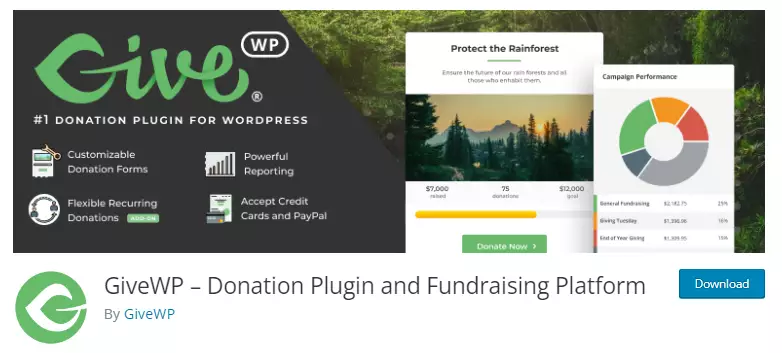

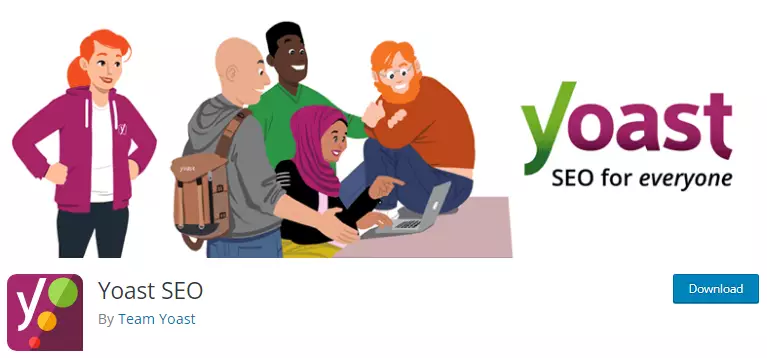


How To Create A Nonprofit Website With WordPress (Best Guide in 2023)